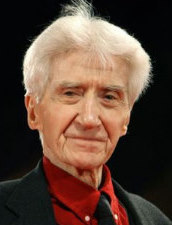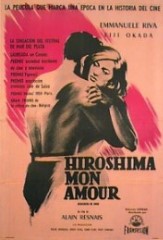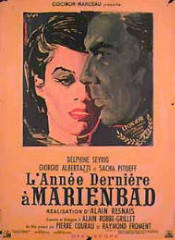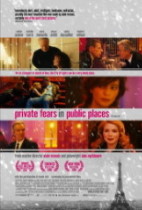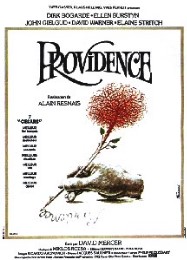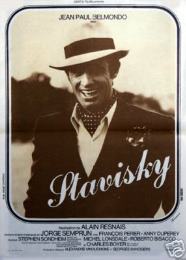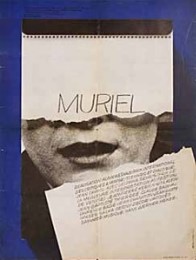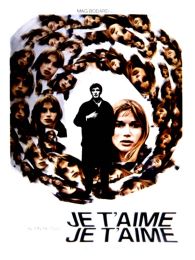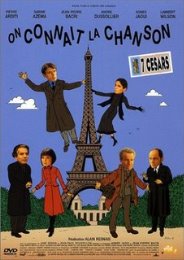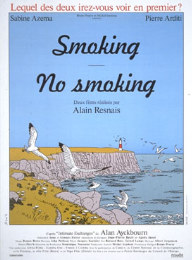|
||||||||
|
|
||||||||
To explain the process in order we should begin with Life is a Bed of Roses (1983), whose French title La Vie est un roman, which literally translates as Life is a Novel just doesn't carry it's implication in such form. Life is Just a Bowl of Cherries might be closer to the mark. But there are no cherries on view in this time-shifting fantasy about the wealthy and eccentric Count Forbeck (Ruggero Raimondi) who on the eve of World War I strives to create a “Castle of Happiness” in the Ardennes. When part of his master plan is completed a group select guest (Fanny Ardant and Andre Dussolier playing two of them) arrive to drunk a mysterious potion that will revive within them a child-like state of bliss. It doesn't work. But neither do the plans of group of academics who descend upon the site in the present day (Sabene Azema, Geraldine Chaplin and Pierre Arditi in their number) who under the command of a new guru named Guarini (Vittorio Gassman) try to take up intellectually where the first group left off sensually. They're marginally more successful in that two of their number hook up. But that would make the film a simple past/present story. The action is often give over to fairy tale creatures (Kings, Knights, Maidens, Witches, talking salamanders) and that's not to mention the pack of small children racing through for reasons that are never simply explained. In other words it's just as mysterious as Marienbad -- but with a twist. And that twist comes from the fact that rather than a novelist as was his practice in the past, Resnais worked with veteran scriptwriter Jean Grualt, whose credits include Jules and Jim, Les Carabiniers, The Story of Adele H, The Rise of Louis XIV and Paris Belongs to Us. Over and above all Life is a Bed of Roses is haunted by he cinematic past -- particularly the films that director Marcel L'Herbier made in the era the story reflects particularly L'Inhumaine (1924) and Le Vertige (1927) with their massive cubism-meets-art-nouveau sets. Resnais, in a sense, is returning to his childhood. The "Making of" documentary on the disc makes this apparent without "spelling it out" in a literal fashion. And as the other films in this group show the trip is far from over. L'amour a mort (1984), also scripted by Grualt, is nominally set in the present. But its drama vibrates with the zeitgeist of the post World War I era, when many plays and novels (Journey’s End being one example) dealt with death. In this instance a man (Pierre Arditi) has an attack (of what is never made clear) that has a doctor (Jean Daste, in his youth the barge captain of Vigo's L'Atalante) declare him dead. Moments later he rises up as if nothing has happened. But something has as the woman he loves (Sabine Azema) and their close friends -- a couple who are both religious ministers (Andre Dussolier and Fanny Ardant) -- sense it too. Gradually he begins to recall the death state and even go so far as to desire to experience it once again. When he does, this time for good, it leaves his beloved bereft. And the remainder of the film pivots on an argument that's both religious and philosophical about the morality of suicide. Like his early masterpiece Muriel, L'amour a mort sports a score by Hans Werner Henze. But this time rather than run during the action, everything stops as the screen either goes completely black or black with flecks of white snow falling across it as the music plays. In an interview included on the disc actor Pierre Arditi explains that this makes the film a musical of sorts, in that Resnais was most attentive to the sounds the actors were making before and after the brief music segments -- as if it were a form of wordless song. Mélo (1986) is less heavy going. But this tragic romance is linked to the past in that it's an adaptation of a play by Henry Bernstein -- a French "boulevard" playwright of the 1920's. And Resnais himself adapted what in its time was a contemporary work, rendering it on film as a period. piece. A love triangle among musicians it presents a seemingly perfect couple (Pierre Arditi and Sabine Azema) whose lives are uprooted by a close friend (Andre Dussolier). Sitting with them after a pleasant diner at their house this handsome and successful pianist recounts his unhappy love life, telling of the night he discovered a woman to whom he was in thrall not only loved another man but was quite willing to lie about that fact. This long monologue is key to the action in that while telling it to the couple the female of the two falls in love with him. To see what Resnais is doing here one need only quote an interview he gave to Richard Round in Sight and Sound back in 1969 speaking of his enthusiasm for Sacha Guitry. "The camera doesn't move very much, the shots don’t change very often, and yet I'm not bored. it's only people sitting in chairs talking to each other, but it's never dull. You never long for a change of shot, you never get restless, whereas in other films if there wasn't movement, I used to get very impatient. It is simply because what they're saying is so interesting?" Perhaps that's it. For Guitry - an actor playwright and novelist as well as a filmmaker -- had a particular charm on view in the likes of Bonne Chance (1935), Story of a Cheat (1936), and Faison un Reve (1937) , all entirely dependent on dialogue and the maintenance of atmosphere. Mélo is Guitry-style "filmed theater" -- quite a different brand than Dreyer's Gertrud, closer to the chatty comedies of Rohmer, but with a starker underpinning of tragedy. Producer Marin Karmitz in an interview accompanying the film, explains how financial restrictions freed Resnais and his crew up. The film had to be shot quickly, but the y had time to fully rehearse on the rather elaborate sets, which besides a garden and a deluxe apartment boasts a nightclub scene where , while the camera is focused on a particular table takes in the action going around about it be means of the mirror that sits over said table. Both elegant and effective. As if turning his back on such suave gravity I Want to Go Home finds Resnais dealing with two of his great loves: comic strips and Singin' in the Rain. As Resnais scholars well know, the great director considered filming both The Phantom and Mandrake the Magician (two projects that also interested Federico Fellini) at one time or another, and contributed to the French comic strip magazine Giff-Wiff. There's a memorable shot of a comic book collection in Resnias shot Toute la memorie du monde and the continuity of Muriel bears more than a passing resemblance to The Heart of Juliet Jones (another favorite bande desinee favorite) As for Singin' in the Rain, that's represented by its co-author, Adolph Green who Resnais cast as his leading man "Joey Wellman" a successful cartoonist. The script by successful cartoonist Jules Feiffer has this American travelling to Paris for both a cartoon exhibition and a chance to make amends wit his long-estranged daughter Elsie (Laura Benson). Elsie has turned her back on America and her Daddy's greatest creation "Hepp Catt" in favor of Flaubert scholar "Christian Gaulthier" Gerard Depardieu.) But as both father and daughter soon learn this Parisian intellectual is in thrall to comic in general and "Hepp Catt" in particular. In short, I Want to Go Home is a satirical farce moving in two directions at once, dealing as it does with American pretensions about the glories of French high culture and French pretensions about the vivacity of American pop culture. The result pleased no one. The film was such an enormous flop in France that as producer Marin Karmitz explains in a documentary on the disc it held up his future career for a considerable length of time. But he’s not sorry. And he shouldn't be I Want to Go Home is a film maudit, meaning in the words of Village Voice critic J. Hoberman "literally, 'cursed film'-[a term used] to describe those movies rendered marginal by disrepute. Some films maudit are intentionally outré. Others are merely luckless, consigned to the leper colony by their impoverished means or blatant nuttiness." I Want to Go Home is both outré and blatantly nutty. It's also a rather special joy. Hiroshima Mon Amour and Last Year at Marienbad have been available for some time on DVD, as have Night and Fog, Mon Oncle D'Amerique and La Guerre es finie. Koch-Lorber recently brought out Muriel. His Amazing 2003 rendition of a 1920's comic operetta Not On the Lips went straight to DVD without ever reaching theaters. You can even find his 1955 color and scope short Le Chant du Styrene on a disc called "Their First Films" -- though this little wonder, scripted in Alexandrines (rhyming couplets) by Raymond Queneau certainly tells you where Resnais "is coming from." One hopes for an English-friendly DVD future for Smoking/No Smoking (1993) -- his two part adaptation of a suite of Alan Acykbourne plays reconfigured for his two favorite actors -- Sabine Azema and Pierre Arditi. And that's not to mention DVDs of his Denni Potter inspired lip-synch musical On Connais la Chanson (1997), or his great Jacques Sternberg-scripted time-travel romance Je t'aime je t'aime (1968) There's a lot of Resnais to go around, and to go over. For like his heroes this matchless artist gives us leave to defy time and space through the subtlest of all machines -- the cinema.
Coming to DVD - February 19th - I Want to Go Home, Life is a Bed of Roses, Love Unto Death, and Mélo. (click covers and PRE-ORDER) |
||||||||
|





